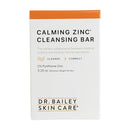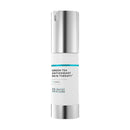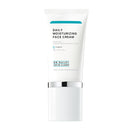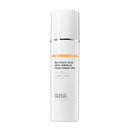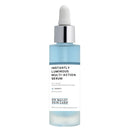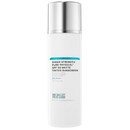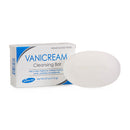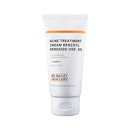Best Acne Skin Care Treatment to Prevent Gram Negative Folliculitis

 Creating the best skin care treatment to prevent gram-negative folliculitis is important because the pimples of gram-negative folliculitis can be huge, painful and can scar. They resist normal acne treatments and are a reason why your acne won’t go away for many people. This vexing form of acne-like skin problem can also come back. It is important to try hard to prevent recurrence.
Creating the best skin care treatment to prevent gram-negative folliculitis is important because the pimples of gram-negative folliculitis can be huge, painful and can scar. They resist normal acne treatments and are a reason why your acne won’t go away for many people. This vexing form of acne-like skin problem can also come back. It is important to try hard to prevent recurrence.
I’ve treated so many people suffering from gram negative folliculitis in my dermatology practice for over 30+ years.
Many of these patients had seen other dermatologists and health care providers who missed the diagnosis to the patient’s detriment. Once we clear up this horrible acne-like problem we then work hard to create a skin care routine that will help prevent the terrible pimples from returning. I just received this exact question from a reader and I wanted to share my answer with everyone.
Dear Dr. Bailey,
I recently finished an Antibiotic called Ciprofloxacin to clear my gram-negative folliculitis infection on my face, specifically of the Klebsiella aerogenes species. I am now looking to start a good regime to keep my skin clear from blemishes, but also prevent the Infection from coming back. My Derm said it is believed gram-negative folliculitis is caused by long term antibacterial use. Prior to having it, I was using Aczone (dapsone) on my face every day for almost 4 years, so I'd assume that would be the culprit. I figured going forward I need to stop putting anything antibacterial on my face, but also still want to treat my skin to keep it clear from regular pimples.
I was thinking of buying the highest percentage of salicylic acid/glycolic acid that you sell. I surf a lot, so I do always wear sunscreen, I was thinking of purchasing the zinc oxide water resistant sunscreen you sell, it is Citrix, so I'd assume that alone even though just sunscreen could probably help blemishes? I have read what you wrote on benzoyl peroxide in regards to there really being no difference of 2.5 percent to 10 percent. I was thinking of buying that too, doing some research. I read it's antimicrobial, not antibacterial, so I think that would be ok to put on my face and would not reaggregate the gram-negative folliculitis? (not sure if you can answer that one). Seems the (Calming) Zinc bar has great reviews too. Figured I could get all of those.
Thanks so much! Josh
Josh has done his homework and really understands what causes gram-negative folliculitis. He has basically picked out products that I use as a Complete Routine to prevent both acne vulgaris and Pityrosporum folliculitis type of 'fungal' acne. It is a great routine for gram-negative folliculitis prevention too. He can get the ingredients in my Pityrosporum Folliculitis Kit!
Josh gives a really classic story of gram-negative folliculitis and how frustrating it is.
Gram-negative folliculitis is a vicious cause of large acne pustules due to bacteria that overgrow secondary to long term antibiotic suppression of normal skin flora (the good germs that live on us).
Antibiotics, either in oral or topical medicines, only target a subset of bacteria. Long term antibiotic use allows the other germs to 'fill in the void' so to speak.
Gram-negative folliculitis is one of the reasons I never like leaving my acne patients on long term antibiotics if I can avoid it. Dermatologist Dr. Cynthia Bailey
That said, antibiotics have been the standard of care for acne long before I was a dermatologist. My teenage acne was treated with oral Tetracycline and topical sulfacetamide back in the 1970s. Clinical acne studies have evolved since then and I know think benzoyl peroxide is a better way to target the acne causing bacteria than antibiotics.
Benzoyl peroxide is bactericidal against microbes, not just Cutibacterium acnes, the bacteria that causes acne.
The term 'bactericidal' means it kills the bacteria and benzoyl peroxide works fast to kill microbes both on the skin and in the pores. Benzoyl peroxide is also a medicine that has a mild ability to reduce sebum. It's also a keratolytic, which means that it helps to prevent plugged pores that lead to blackheads and pimples.
Benzoyl peroxide is also an ‘off-label’ treatment for gram-negative folliculitis.
How does benzoyl peroxide work to treat acne and kill bacteria?
Benzoyl peroxide is converted on the skin to benzoic acid, which oxidizes bacterial proteins. Because the mechanism of action is so simple bacteria don’t become resistant to benzoyl peroxide, unlike antibiotics, which work in more complex ways to fight germs.

What is the best way to use benzoyl peroxide to treat acne and hopefully prevent gram-negative folliculitis?
My preference is a lower percentage benzoyl peroxide cream, such as 2.5 to 5% applied after washing. Benzoyl peroxide products come in concentrations ranging from 2.5 to 10% and are available without prescription. As Josh pointed out, the 2.5% is proven as effective as higher concentrations at controlling the acne causing bacteria. Some people still prefer higher strengths. Our 5% benzoyl peroxide cream is formulated with ultra-micronized U.S.P. benzoyl peroxide in a non-drying base to reduce irritation for daily application but still be a great solution to spot treat pimples. You can find benzoyl peroxide products as creams, lotions, gels, foams, solutions, cleansers, cloths, pads, masks and shaving creams. If a rinse off formulation, such as a cleanser is used, I prefer benzoyl peroxide at a stronger concentration such as 10%.
How often you use benzoyl peroxide depends on the product type.
- Cleansers typically are used one to three times a day.
- Masks are used once a week.
- Creams are applied once or twice a day.
Should you spot treat pimples with benzoyl peroxide or treat the entire acne-prone skin?
Spot treatment of pimples with benzoyl peroxide is popular. But you are not preventing new outbreaks by doing this. Ideally, benzoyl peroxide should be applied to the entire acne-prone areas of your skin can help prevent breakouts by controlling the microbes, reducing sebum and keeping pores clear. That said, our 5% benzoyl peroxide is an excellent solution for spot treatment of pimples.
What are the side effects of benzoyl peroxide?
Benzoyl peroxide bleaches colored fabric!
Don’t get it on your favorite colored shirt, rub it on colored towels or sleep on colored bed linens unless you don’t mind permanent white smudges.
The higher concentrations of benzoyl peroxide can cause skin irritation and dryness.
Most skin ‘rashes’ due to benzoyl peroxide are simply irritation from using too high a concentration or too frequent of an application. This means that lowering the concentration and applying less frequently is all that’s needed for skin tolerance.
Rarely, a person may get an allergic to benzoyl peroxide and get an allergic contact dermatitis to it and need to discontinue use permanently.
People with an allergy to cinnamon or benzoic acid are more likely to be allergic to benzoyl peroxide.

Can you get gram-negative folliculitis from using a topical antibiotic?
The answer is yes. We have long known this. It was first described way back in 1979, when I was in college, by two dermatologists who became subsequent colleagues of mine once I ‘grew up’. Aczone is a relative newcomer antibiotic for topical acne treatment having been available for a little over 15 years. Most prescription antibiotics predate my years in dermatology (that tells you something). All topical prescription antibiotics can predispose someone to gram-negative folliculitis. That said, topical antibiotics are still commonly prescribed to treat and prevent acne, often for many years.
Aczone is dapsone, which is an unusual antibiotic with unique anti-inflammatory actions that may help reduce acne lesion redness. Dapsone is a very interesting medicine, (curious science-inclined minds may want to click here ) but like all antibiotics, it treats some bacteria but not all. The uniqueness of this medicine is evidenced by the fact that doctors prescribe it orally to treat a range of rare skin problems that you either have never heard of or seen such as leprosy, Sweet’s syndrome, pyoderma gangrenosum, dermatitis herpetiformis and more.
What is the best combination of ingredients to treat and suppress acne with your skin care?
I prefer topical benzoyl peroxide for antimicrobial treatment and suppression of acne. I usually combine it with additional keratolytics that help keep pores free from plugs that tuck in the C. acnes bacteria allowing it to thrive and cause acne. I use pyrithione zinc to fight skin yeast that causes 'fungal' acne. These are combined with salicylic acid, glycolic acid and sometimes a retinoid. My Pityrosporum Folliculitis Kit combines these treatments into a Complete Skin Care Routine of compatible products that address both acne vulgaris and Pityrosporum folliculitis.
There are as many ways to treat acne as there are dermatologists. This is how I do it and, fortunately, I have not had common trouble with recurrences of gram-negative folliculitis.
In the context of gram-negative folliculitis, I did some research in the medical literature looking for studies on the antibacterial actions of salicylic acid and glycolic acid.
- Interestingly, salicylic acid has some mild antimicrobial activity against a broad range or organisms, including Klebsiella Like benzoyl peroxide, salicylic acid appears to maintain antimicrobial activity even against resistant bacteria. Salicylic acid’s antimicrobial mechanism of action, however, is not entirely clear
- Glycolic acid also has some weak antibacterial action in professional level products. It seems to work by disrupting bacterial membranes.
Neither of these two exfoliating ingredients, salicylic acid or glycolic acid, are considered antibiotics but they do have some evidence for weak antibacterial activity.
All 3 of these exfoliating ingredients mean that wearing a really good sunscreen every day is important. Josh is really smart to be including a sunscreen into his skin care routine.
Is a pyrithione zinc product good to use after gram-negative folliculitis?
Pyrithione zinc is also an antimicrobial ingredient that’s been around since the 1960s in dandruff shampoos. It’s also used in non-personal care products and has broad antimicrobial activity against bacteria (gram positive and negative), yeast and fungi.
Zinc pyrithione appears to kill yeast and fungal organisms by allowing increased copper to enter the cells and mess up the workings of the organisms.
Even in topical rinse-off preparations, such as my Calming Zinc Bar Soap and Foaming Zinc Cleanser, particles of pyrithione zinc are known to remain on the skin where they “slowly release molecularly active material to interact with the surface fungal and bacteria cells to control their population." according to the authors of one scientific article.
In my professional opinion, if a person's acne was originally at least in part due to Pityrosporum folliculitis, then Calming Zinc is worth adding to the skin care routine. - Dermatologist Dr. Cynthia Bailey
Thus, all of the ingredients that Josh is considering have broad antimicrobial activity. This is in contrast to antibiotics which work on a more targeted population of bacteria. Targeting the germs that cause acne is important to clearing this skin problem. That said, our cutaneous microbiome (all the germs that live on our skin) is a brave new adventure in science. We know so little about it right now and it’s impossible to think we can fully predict tomorrow’s exciting scientific discoveries.
For today, my acne routines typically include exactly the products that Josh has mentioned:
Calming Zinc Soap alternated with my Foaming Acne Treatment Cleanser with salicylic acid and glycolic acid.
Application of 5% benzoyl peroxide cream to acne prone areas once or twice a day or as spot treatment for those fortunate enough to have only the infrequent breakout.
Daily Moisturizing Face Cream to help maintain a healthy skin barrier, especially at night when sunscreen will not be worn.
A good zinc oxide sunscreen that won’t clog pores and is worn every day. For daily wear, I prefer my Sheer Strength Matte Tinted SPF 30 Sunscreen for daily facial wear. When a water-resistant product is needed, Citrix is a great option. It is also formulated in a hydrating base and allows you to skip the moisturizer.
I've selected the products and created the routine with my Pityrosporum Folliculitis Kit.
Josh, thank you, this is a great question!
Dr. Cynthia Bailey, Board Certified Dermatologist
Please remember that my answering a question is never personal medical advice and is always for informational, educational and entertainment purposes. It never constitutes the presence of a doctor patient relationship, and your personal choices are solely your own responsibility and never mine.


